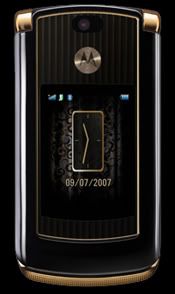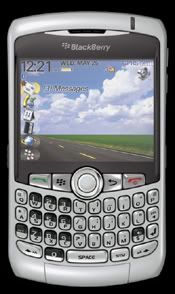Monday, May 26, 2008
Probe-able Cause

NASA's Phoenix spacecraft successfully touched down on the surface of Mars Sunday night, the first time in 32 years that the space agency has landed a probe on the Red Planet using retrorockets. Jubilant officials at NASA's Jet Propulsion Laboratory (JPL) in Pasadena, Calif., burst into cheers when Phoenix's radio signal came in as scheduled at 7:53 p.m. ET, indicating that the $457 million lander is in position near Mar's northern polar cap. About two hours later, the mission controllers got word that the craft's solar arrays had successfully deployed. The twin 6-foot circular disks are the power source. If they hadn't deployed, Phoenix would only have had about three hours of battery power. And immediately after that, images began to arrive — the scientists' best-case scenario. "What we're looking at is a surface of Mars that we've never seen before," said Dan McCleese, JPL's chief scientist. The "crystal clear" images showed a flat surface with very few rocks. The images released at a midnight press conference looked much like illustrations of the surface prepared by NASA, the brown terrain dotted with troughs and small rocks. "I know it looks like a parking lot, but that's a safe place to land, by gosh," joked Peter Smith, Phoenix's principal investigator, at the press briefing. Smith, a planetary sciences professor at the University of Arizona, proposed and helped develop the mission. "This was just perfect. It didn't seem real," said Smith. "I'm on Cloud 9." JPL's Barry Goldstein, the project manager, noted that one image shows that the planet surface was not greatly damaged by the rocket thrusters. Edward Sedivy, Phoenix program manager at Lockheed Martin Space Systems Company, which built the probe, described the landing as fairly gentle at 5 mph. Sedivy said the priority for the next few days will be assessing the craft's power requirements and regeneration. He said the team must see how much power the lander needs at night and how quickly the solar arrays are able to recharge the batteries during the day ... "Engineers in Mission Control are saying that our actual landing went far smoother than any simulation or test that was ever done," said Shockley, the mission's configuration and information management Engineer. It takes 15 minutes for Phoenix's radio signal to reach Earth, which meant a long, suspenseful wait in the home stretch for members of the mission staff assembled in the JPL's mission control room. As the mission team awaited word of the craft's fate, the early stages of its entry into the Martian atmosphere appeared to go well. As the news arrived that each challenge had been met — that the cruise-stage hardware had been jettisoned and the craft had pivoted to turn its heat shield towards the planet's surface; that the parachute had deployed and the radar had been activated — the control room filled with applause. This happy ending to Phoenix's 423-million-mile, nine-month journey was far from a safe bet. Of the 11 missions that have tried to land probes on Mars since 1971 — by the United States, Russia and Great Britain — only five have succeeded ... The Phoenix lander is designed to collect and examine ice and rock samples for evidence of microscopic life. NASA scientists hope that if a rudimentary form of life existed there millions of years ago, traces of it might remain. There's a reason this Mars mission is named Phoenix, after the mythical bird that rises from the ashes of its own funeral pyre. The spacecraft originally was scheduled to launch in 2001 as the Mars Surveyor, but it was grounded because of the Mars Polar Lander crash. Phoenix's equipment includes a robotic arm that will dig up soil samples and a portable laboratory that will test the soil. The Martian soil is expected to be a frozen matrix of rocks, gravel, sand and ice as hard as concrete. The samples will be viewed by an onboard microscope, and high-resolution images will be beamed to scientists on Earth. Phoenix also is a weather station with a mast that will rise 4 feet, allowing scientists to calculate the extent of water vapor and cloud cover. Phoenix isn't alone on Mars. NASA has had the golf cart-sized rovers, mobile geology labs called Spirit and Opportunity, on the surface since January 2004. Overhead are the Mars Odyssey, which began its orbit on Oct. 24, 2001, and the Mars Reconnaissance Orbiter, which reached Mars in March 2006. The European Space Agency's Mars Express orbiter also has been circling the planet since 2003 ... The mission is expected to last 90 days. In three months, winter will come to the Martian north pole and the sun won't rise again for 100 days. The solar-powered craft is not expected to survive the frigid temperature.
I can understand the elation here ... can you imagine spending time and energy (and $457 million dollars) on a project that had a 50/50 chance of success and then learning that all that planning and hard work (and money) actually paid off? I love that we've finally gotten around to doing some more space exploration. I recall the days of my youth when the US Space Program was a thriving enterprise and things like Space Camp and astronaut ice cream was all the rage. Tragedies like the Challenger explosion brought those carefree and hopeful days to an end ... or at least, that's the way it seemed to me as a kid. I would really love it if there were regular missions into space again, even if they consist of unmanned probes. Things like this latest accomplishment give us a hopeful outlook on the future and will, no doubt, fuel the dreams of a new generation of kids looking up to the heavens. [Source]
[Permalink]



 search this site
search this site






















































































